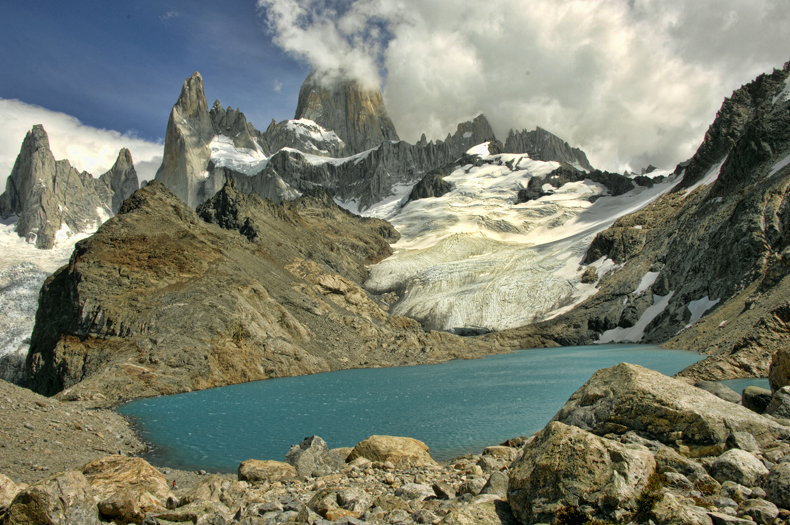
In spite of what you may have heard, the real story of Patagonia is not wind or isolation, but the shifting fortunes of the sheep industry. Of all the changes blowing through Patagonia in recent years, none will be more telling than the shifts in ownership and land use of the great sheep farms, or estancias, since the 1970s. That's when the bottom fell out of wool prices even as much of Patagonia became desertified from overgrazing. A culture and economy built on the back of sheep went belly up.
In 1970 Santa Cruz Province had a thousand estancias, many of them several hundred thousand acres just bleating with sheep. Today there may be half that many, most of them owned by foreign investors, who are usually American. And to make ends meet, they are turning to tourism, offering a Patagonia style dude-ranch experience to subsidize income from wool. Wide open spaces and drop dead vistas have made Patagonia a trendy new frontier-Colorado at a discount.
Driving west across the Patagonian steppe, I chase the horizon straight to the heart of the Andes, boasting the highest peaks in the world outside the Himalayas. In doing so I pass several estancias, oases of green accenting the sere brown bush. Arching over it all is a constant cobalt sky. For a week I have fled the wind by day and gazed at the Southern Cross at night. I am alone, better to commune with the inner self. The solitude is occasionally punctuated by a lonesome gaucho, astride a horse and rounding up strays, which in these parts would be sheep instead of cows.